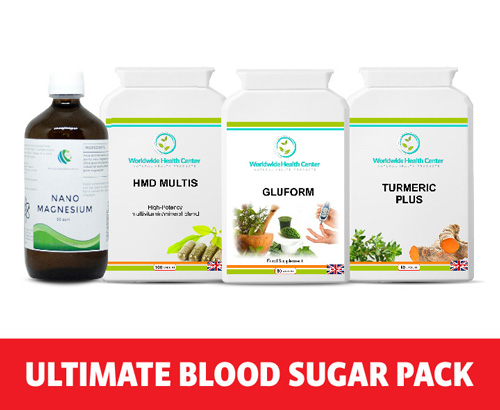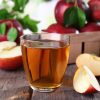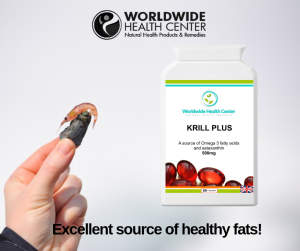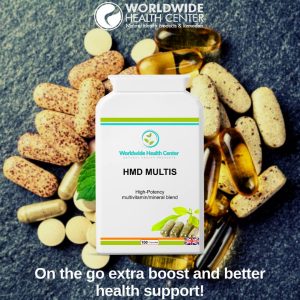Need help? Email us:
- AMINO ACIDS
- Antioxidants
- Blood Sugar Regulation
- Bone and Joint Repair
- BOOKS
- Brain Food & Energy Supplements
- Candida Support
- Cardiovascular Support
- Cholesterol
- Constipation Relief
- Dental Health
- Detox
- Digestive Support
- Eye Support
- Fatty Acids
- Gut Health
- Hair Mineral Analysis
- Heavy Metal Detox
- Herbal Tinctures
- Immune Support
- Liver Support
- METABOLIC TYPING
- Multivitamin & Mineral
- Natural antimicrobials and parasite remedies
- Natural Diuretic
- Probiotics
- Prostate Health
- Tachyon Products
- Uncategorized
- VITAMINS
- WEIGHT LOSS
ARE SOYA PRODUCTS HEALTHY?

WHAT WE LEARN MUST BE TAKEN WITH CAUTION!
When I was studying Clinical Nutrition, we learned that soya is a good, healthy food that is a good substitute for meat, given that it contains about 40% protein. Over time, however, as I read more and more research about soya products, I have developed a cautious attitude. I would simply like to share some of what I have read, and you can take it from there.
Most of this excellent material was taken from an article written in Nexus Magazine by Sally Fallon, who is the author of Nourishing Traditions: The Cookbook that Challenges Politically Correct Nutrition and the Diet Dictocrats (1999, 2nd edition, New Trends Publishing), and President of the Weston A. Price Foundation, Washington, DC Mary G. Enig, PhD, is the author of Know Your Fats: The Complete Primer for Understanding the Nutrition of Fats, Oils and Cholesterol (2000, Bethesda Press, and is President of the Maryland Nutritionists Association and Vice President of the Weston A. Price Foundation, Washington, DC.
Each year, research on the health effects of soy and soybean components seems to increase exponentially. Furthermore, research is not just expanding in the primary areas under investigation, such as cancer, heart disease and osteoporosis; new findings suggest that soy has potential benefits that may be more extensive than previously thought.
So writes Mark Messina, PhD, General Chairperson of the Third International Soy Symposium, held in Washington, DC, in November 1999. For four days, well-funded scientists gathered in Washington made presentations to an admiring press and to their sponsors – United Soybean Board, American Soybean Association, Monsanto, Protein Technologies International, Central Soya, Cargill Foods, Personal Products Company, SoyLife, Whitehall-Robins Healthcare and the soybean councils of Illinois, Indiana, Kentucky, Michigan, Minnesota, Nebraska, Ohio and South Dakota.
The symposium marked the apogee of a decade-long marketing campaign to gain consumer acceptance of tofu, soy milk, soy ice cream, soy cheese, soy sausage and soy derivatives, particularly soy isoflavones like genistein and diadzen, the oestrogen-like compounds found in soybeans. It coincided with a US Food and Drug Administration (FDA) decision, announced on October 25, 1999, to allow a health claim for products “low in saturated fat and cholesterol” that contain 6.25 grams of soy protein per serving. Breakfast cereals, baked goods, convenience food, smoothie mixes and meat substitutes could now be sold with labels touting benefits to cardiovascular health, as long as these products contained one heaping teaspoon of soy protein per 100-gram serving.
THE PUSH FOR MORE SOYA
The push for more soy has been relentless and global in its reach. Soy protein is now found in most supermarket breads. It is being used to transform “the humble tortilla, Mexico’s corn-based staple food, into a protein-fortified ‘super-tortilla’ that would give a nutritional boost to the nearly 20 million Mexicans who live in extreme poverty”. Advertising for a new soy-enriched loaf from Allied Bakeries in Britain targets menopausal women seeking relief from hot flushes. Sales are running at a quarter of a million loaves per week. The soy industry hired Norman Robert Associates, a public relations firm, to “get more soy products onto school menus”.
The USDA responded with a proposal to scrap the 30 per cent limit for soy in school lunches. The NuMenu program would allow unlimited use of soy in student meals. With soy added to hamburgers, tacos and lasagna, dieticians can get the total fat content below 30 per cent of calories, thereby conforming to government dictates. “With the soy-enhanced food items, students are receiving better servings of nutrients and less cholesterol and fat.”
Soy milk has posted the biggest gains, soaring from $2 million in 1980 to $300 million in the US last year. Recent advances in processing have transformed the grey, thin, bitter, beany-tasting Asian beverage into a product that Western consumers will accept – one that tastes like a milkshake, but without the guilt. Processing miracles, good packaging, massive advertising and a marketing strategy that stresses the products’ possible health benefits account for increasing sales to all age groups.
For example, reports that soy helps prevent prostate cancer have made soy milk acceptable to middle-aged men. “You don’t have to twist the arm of a 55- to 60-year-old guy to get him to try soy milk,” says Mark Messina. Michael Milken, former junk bond financier, has helped the industry shed its hippie image with well-publicised efforts to consume 40 grams of soy protein daily.
THE OTHER SIDE OF THE COIN – SOYA’S UGLY FACE
The Chinese did not eat unfermented soybeans as they did other legumes such as lentils because the soybean contains large quantities of natural toxins or “anti-nutrients”. First among them are potent enzyme inhibitors that block the action of trypsin and other enzymes needed for protein digestion. These inhibitors are large, tightly folded proteins that are not completely deactivated during ordinary cooking. They can produce serious gastric distress, reduced protein digestion and chronic deficiencies in amino acid uptake.
In test animals, diets high in trypsin inhibitors cause enlargement and pathological conditions of the pancreas, including cancer. Soybeans also contain haemagglutinin, a clot-promoting substance that causes red blood cells to clump together.
Trypsin inhibitors and haemagglutinin are growth inhibitors. Weanling rats fed soy containing these antinutrients fail to grow normally. Growth-depressant compounds are deactivated during the process of fermentation, so once the Chinese discovered how to ferment the soybean, they began to incorporate soy foods into their diets. In precipitated products, enzyme inhibitors concentrate in the soaking liquid rather than in the curd. Thus, in tofu and bean curd, growth depressants are reduced in quantity but not completely eliminated. Soy also contains goitrogens – substances that depress thyroid function.
Soybeans are high in phytic acid, present in the bran or hulls of all seeds. It’s a substance that can block the uptake of essential minerals – calcium, magnesium, copper, iron and especially zinc – in the intestinal tract. Although not a household word, phytic acid has been extensively studied; there are literally hundreds of articles on the effects of phytic acid in the current scientific literature.
Scientists are in general agreement that grain- and legume-based diets high in phytates contribute to widespread mineral deficiencies in third world countries. Analysis shows that calcium, magnesium, iron and zinc are present in the plant foods eaten in these areas, but the high phytate content of soy- and grain-based diets prevents their absorption. The soybean has one of the highest phytate levels of any grain or legume that has been studied, and the phytates in soy are highly resistant to normal phytate-reducing techniques such as long, slow cooking. Only a long period of fermentation will significantly reduce the phytate content of soybeans. When precipitated soy products like tofu are consumed with meat, the mineral-blocking effects of the phytates are reduced. The Japanese traditionally eat a small amount of tofu or miso as part of a mineral-rich fish broth, followed by a serving of meat or fish.
Vegetarians who consume tofu and bean curd as a substitute for meat and dairy products risk severe mineral deficiencies. The results of calcium, magnesium and iron deficiency are well known; those of zinc are less so. Zinc is called the intelligence mineral because it is needed for optimal development and functioning of the brain and nervous system. It plays a role in protein synthesis and collagen formation; it is involved in the blood-sugar control mechanism and thus protects against diabetes; it is needed for a healthy reproductive system.
Zinc is a key component in numerous vital enzymes and plays a role in the immune system. Phytates found in soy products interfere with zinc absorption more completely than with other minerals. Zinc deficiency can cause a “spacey” feeling that some vegetarians may mistake for the “high” of spiritual enlightenment.
Milk drinking is given as the reason why second-generation Japanese in America grow taller than their native ancestors. Some investigators postulate that the reduced phytate content of the American diet – whatever may be its other deficiencies – is the true explanation, pointing out that both Asian and Western children who do not get enough meat and fish products to counteract the effects of a high phytate diet, frequently suffer rickets, stunting and other growth problems.
SOY PROTEIN ISOLATE: NOT SO FRIENDLY
Soy processors have worked hard to get these anti-nutrients out of the finished product, particularly soy protein isolate (SPI) which is the key ingredient in most soy foods that imitate meat and dairy products, including baby formulas and some brands of soy milk.
SPI is not something you can make in your own kitchen. Production takes place in industrial factories where a slurry of soy beans is first mixed with an alkaline solution to remove fibre, then precipitated and separated using an acid wash and, finally, neutralised in an alkaline solution. Acid washing in aluminium tanks leaches high levels of aluminium into the final product. The resultant curds are spray- dried at high temperatures to produce a high-protein powder. A final indignity to the original soybean is high-temperature, high-pressure extrusion processing of soy protein isolate to produce textured vegetable protein (TVP).
Much of the trypsin inhibitor content can be removed through high-temperature processing, but not all. Trypsin inhibitor content of soy protein isolate can vary as much as fivefold. (In rats, even low-level trypsin inhibitor SPI feeding results in reduced weight gain compared to controls.) But high-temperature processing has the unfortunate side-effect of so denaturing the other proteins in soy that they are rendered largely ineffective. That’s why animals on soy feed need lysine supplements for normal growth. Nitrites, which are potent carcinogens, are formed during spray-drying, and a toxin called lysinoalanine is formed during alkaline processing.
Numerous artificial flavourings, particularly MSG, are added to soy protein isolate and textured vegetable protein products to mask their strong “beany” taste and to impart the flavour of meat. In feeding experiments, the use of SPI increased requirements for vitamins E, K, D and B12 and created deficiency symptoms of calcium, magnesium, manganese, molybdenum, copper, iron and zinc. Phytic acid remaining in these soy products greatly inhibits zinc and iron absorption; test animals fed SPI develop enlarged organs, particularly the pancreas and thyroid gland, and increased deposition of fatty acids in the liver. Yet soy protein isolate and textured vegetable protein are used extensively in school lunch programs, commercial baked goods, diet beverages and fast food products. They are heavily promoted in third world countries and form the basis of many food giveaway programs.
In spite of poor results in animal feeding trials, the soy industry has sponsored a number of studies designed to show that soy protein products can be used in human diets as a replacement for traditional foods. An example is “Nutritional Quality of Soy Bean Protein Isolates: Studies in Children of Preschool Age”, sponsored by the Ralston Purina Company. A group of Central American children suffering from malnutrition was first stabilised and brought into better health by feeding them native foods, including meat and dairy products. Then, for a two-week period, a drink made of soy protein isolate and sugar replaced these traditional foods.
All nitrogen taken in and all nitrogen excreted was measured in truly Orwellian fashion: the children were weighed naked every morning, and all excrement and vomit gathered up for analysis. The researchers found that the children retained nitrogen and that their growth was “adequate”, so the experiment was declared a success. Whether the children were actually healthy on such a diet, or could remain so over a long period, is another matter. The researchers noted that the children vomited “occasionally”, usually after finishing a meal; that over half suffered from periods of moderate diarrhoea; that some had upper respiratory infections; and that others suffered from rash and fever.
It should be noted that the researchers did not dare to use soy products to help the children recover from malnutrition, and were obliged to supplement the soy-sugar mixture with nutrients largely absent in soy products – notably, vitamins A, D and B12, iron, iodine and zinc.
FDA HEALTH CLAIM CHALLENGED
The best marketing strategy for a product that is inherently unhealthy is, of course, a health claim – “The road to FDA approval,” writes a soy apologist, “was long and demanding, consisting of a detailed review of human clinical data collected from more than 40 scientific studies conducted over the last 20 years. Soy protein was found to be one of the rare foods that had sufficient scientific evidence not only to qualify for an FDA health claim proposal but to ultimately pass the rigorous approval process.” The “long and demanding” road to FDA approval actually took a few unexpected turns. The original petition, submitted by Protein Technology International, requested a health claim for isoflavones, the oestrogen-like compounds found plentifully in soybeans, based on assertions that “only soy protein that has been processed in a manner in which isoflavones are retained will result in cholesterol lowering”. In 1998, the FDA made the unprecedented move of rewriting PTI’s petition, removing any reference to the phyto-oestrogens and substituting a claim for soy protein – a move that was in direct contradiction to the agency’s regulations. The FDA is authorised to make rulings only on substances presented by petition.
The abrupt change in direction was no doubt due to the fact that a number of researchers, including scientists employed by the US Government, submitted documents indicating that isoflavones are toxic. The FDA had also received, early in 1998, the final British Government report on phytoestrogens, which failed to find much evidence of benefit and warned against potential adverse effects. Even with the change to soy protein isolate, FDA bureaucrats engaged in the “rigorous approval process” were forced to deal nimbly with concerns about mineral blocking effects, enzyme inhibitors, goitrogenicity, endocrine disruption, reproductive problems and increased allergic reactions from consumption of soy products. One of the strongest letters of protest came from Dr Dan Sheehan and Dr Daniel Doerge, government researchers at the National Center for Toxicological Research. Their pleas for warning labels were dismissed as unwarranted. “Sufficient scientific evidence” of soy’s cholesterol-lowering properties is drawn largely from a 1995 meta-analysis by Dr James Anderson, sponsored by Protein Technologies International and published in the New England Journal of Medicine.
A meta-analysis is a review and summary of the results of many clinical studies on the same subject. Use of meta-analyses to draw general conclusions has come under sharp criticism by members of the scientific community. “Researchers substituting meta-analysis for more rigorous trials risk making faulty assumptions and indulging in creative accounting,” says Sir John Scott, President of the Royal Society of New Zealand. “Like is not being lumped with like. Little lumps and big lumps of data are being gathered together by various groups.”
There is the added temptation for researchers, particularly researchers funded by a company like Protein Technologies International, to leave out studies that would prevent the desired conclusions. Dr Anderson discarded eight studies for various reasons, leaving a remainder of twenty-nine. The published report suggested that individuals with cholesterol levels over 250 mg/dl would experience a “significant” reduction of 7 to 20 per cent in levels of serum cholesterol if they substituted soy protein for animal protein. Cholesterol reduction was insignificant for individuals whose cholesterol was lower than 250 mg/dl.
In other words, for most of us, giving up steak and eating vegieburgers instead will not bring down blood cholesterol levels. The health claim that the FDA approved “after detailed review of human clinical data” fails to inform the consumer about these important details.
Research that ties soy to positive effects on cholesterol levels is “incredibly immature”, said Ronald M. Krauss, MD, head of the Molecular Medical Research Program and Lawrence Berkeley National Laboratory.35 He might have added that studies in which cholesterol levels were lowered through either diet or drugs have consistently resulted in a greater number of deaths in the treatment groups than in controls – deaths from stroke, cancer, intestinal disorders, accident and suicide.36 Cholesterol-lowering measures in the US have fuelled a $60 billion per year cholesterol-lowering industry, but have not saved us from the ravages of heart disease.
SOY AND CANCER
The new FDA ruling does not allow any claims about cancer prevention on food packages, but that has not restrained the industry and its marketers from making them in their promotional literature.
“In addition to protecting the heart,” says a vitamin company brochure, “soy has demonstrated powerful anticancer benefits…the Japanese, who eat 30 times as much soy as North Americans, have a lower incidence of cancers of the breast, uterus and prostate.” Indeed they do. But the Japanese, and Asians in general, have much higher rates of other types of cancer, particularly cancer of the oesophagus, stomach, pancreas and liver. Asians throughout the world also have high rates of thyroid cancer. The logic that links low rates of reproductive cancers to soy consumption requires attribution of high rates of thyroid and digestive cancers to the same foods, particularly as soy causes these types of cancers in laboratory rats.
Just how much soy do Asians eat? A 1998 survey found that the average daily amount of soy protein consumed in Japan was about eight grams for men and seven for women – less than two teaspoons. The famous Cornell China Study, conducted by Colin T. Campbell, found that legume consumption in China varied from 0 to 58 grams per day, with a mean of about twelve. Assuming that two-thirds of legume consumption is soy, then the maximum consumption is about 40 grams, or less than three tablespoons per day, with an average consumption of about nine grams, or less than two teaspoons. A survey conducted in the 1930s found that soy foods accounted for only 1.5 per cent of calories in the Chinese diet, compared with 65 per cent of calories from pork.42 (Asians traditionally cooked with lard, not vegetable oil!).
Traditionally fermented soy products make a delicious, natural seasoning that may supply important nutritional factors in the Asian diet. But except in times of famine, Asians consume soy products only in small amounts, as condiments, and not as a replacement for animal foods – with one exception. Celibate monks living in monasteries and leading a vegetarian lifestyle find soy foods quite helpful because they dampen libido.
It was a 1994 meta-analysis by Mark Messina, published in Nutrition and Cancer, that fuelled speculation on soy’s anticarcinogenic properties. Messina noted that in 26 animal studies, 65 per cent reported protective effects from soy. He conveniently neglected to include at least one study in which soy feeding caused pancreatic cancer – the 1985 study by Rackis. In the human studies he listed, the results were mixed. A few showed some protective effect, but most showed no correlation at all between soy consumption and cancer rates. He concluded that “the data in this review cannot be used as a basis for claiming that soy intake decreases cancer risk”. Yet in his subsequent book, The Simple Soybean and Your Health, Messina makes just such a claim, recommending one cup or 230 grams of soy products per day in his “optimal” diet as a way to prevent cancer.
Thousands of women are now consuming soy in the belief that it protects them against breast cancer. Yet, in 1996, researchers found that women consuming soy protein isolate had an increased incidence of epithelial hyperplasia, a condition that presages malignancies. A year later, dietary genistein was found to stimulate breast cells to enter the cell cycle – a discovery that led the study authors to conclude that women should not consume soy products to prevent breast cancer.
PHYTOESTROGENS: PANACEA OR POISON?
The male species of tropical birds carries the drab plumage of the female at birth and ‘colours up’ at maturity, somewhere between nine and 24 months. In 1991, Richard and Valerie James, bird breeders in Whangerai, New Zealand, purchased a new kind of feed for their birds – one based largely on soy protein. When soy-based feed was used, their birds ‘coloured up’ after just a few months. In fact, one bird-food manufacturer claimed that this early development was an advantage imparted by the feed. A 1992 ad for Roudybush feed formula showed a picture of the male crimson rosella, an Australian parrot that acquires beautiful red plumage at 18 to 24 months, already brightly coloured at 11 weeks old.
Unfortunately, in the ensuing years, there was decreased fertility in the birds, with precocious maturation, deformed, stunted and stillborn babies, and premature deaths, especially among females, with the result that the total population in the aviaries went into steady decline. The birds suffered beak and bone deformities, goitre, immune system disorders and pathological, aggressive behaviour. Autopsy revealed digestive organs in a state of disintegration. The list of problems corresponded with many of the problems the Jameses had encountered in their two children, who had been fed soy-based infant formula. Startled, aghast, angry, the Jameses hired toxicologist Mike Fitzpatrick. Ph.D., to investigate further. Dr Fitzpatrick’s literature review uncovered evidence that soy consumption has been linked to numerous disorders, including infertility, increased cancer and infantile leukaemia; and, in studies dating back to the 1950s, that genistein in soy causes endocrine disruption in animals. Dr Fitzpatrick also analysed the bird feed and found that it contained high levels of phytoestrogens, especially genistein. When the Jameses discontinued using soy-based feed, the flock gradually returned to normal breeding habits and behaviour.
The Jameses embarked on a private crusade to warn the public and government officials about toxins in soy foods, particularly the endocrine-disrupting isoflavones, genistein and diadzen. Protein Technology International received their material in 1994.
In 1991, Japanese researchers reported that consumption of as little as 30 grams or two tablespoons of soybeans per day for only one month resulted in a significant increase in thyroid-stimulating hormone. Diffuse goitre and hypothyroidism appeared in some of the subjects and many complained of constipation, fatigue and lethargy, even though their intake of iodine was adequate. In 1997, researchers from the FDA’s National Center for Toxicological Research made the embarrassing discovery that the goitrogenic components of soy were the very same isoflavones. Twenty-five grams of soy protein isolate, the minimum amount PTI claimed to have cholesterol-lowering effects, contains from 50 to 70 mg of isoflavones. It took only 45 mg of isoflavones in premenopausal women to exert significant biological effects, including a reduction in hormones needed for adequate thyroid function. These effects lingered for three months after soy consumption was discontinued. One hundred grams of soy protein – the maximum suggested cholesterol-lowering dose, and the amount recommended by Protein Technologies International – can contain almost 600 mg of isoflavones, an amount that is undeniably toxic.
In 1992, the Swiss health service estimated that 100 grams of soy protein provided the oestrogenic equivalent of the Pill. In vitro studies suggest that isoflavones inhibit synthesis of oestradiol and other steroid hormones. Reproductive problems, infertility, thyroid disease and liver disease due to dietary intake of isoflavones have been observed for several species of animals including mice, cheetah, quail, pigs, rats, sturgeon and sheep. It is the isoflavones in soy that are said to have a favourable effect on postmenopausal symptoms, including hot flushes, and protection from osteoporosis. Quantification of discomfort from hot flushes is extremely subjective, and most studies show that control subjects report reduction in discomfort in amounts equal to subjects given soy.
The claim that soy prevents osteoporosis is extraordinary, given that soy foods block calcium and cause vitamin D deficiencies. If Asians indeed have lower rates of osteoporosis than Westerners, it is because their diet provides plenty of vitamin D from shrimp, lard and seafood, and plenty of calcium from bone broths. The reason that Westerners have such high rates of osteoporosis is because they have substituted soy oil for butter, which is a traditional source of vitamin D and other fat-soluble activators needed for calcium absorption.
BIRTH CONTROL PILLS FOR BABIES
But it was the isoflavones in infant formula that gave the James’s most cause for concern. In 1998, investigators reported that the daily exposure of infants to isoflavones in soy infant formula is 6 to11 times higher on a body-weight basis than the dose that has hormonal effects in adults consuming soy foods. Circulating concentrations of isoflavones in infants fed soy-based formula were 13,000 to 22,000 times higher than plasma oestradiol concentrations in infants on cow’s milk formula. Approximately 25 per cent of bottle-fed children in the US receive soy-based formula – a much higher percentage than in other parts of the Western world. Fitzpatrick estimated that an infant exclusively fed soy formula receives the oestrogenic equivalent (based on body weight) of at least five birth control pills per day. By contrast, almost no phytoestrogens have been detected in dairy-based infant formula or in human milk, even when the mother consumes soy products.
Scientists have known for years that soy-based formula can cause thyroid problems in babies. But what are the effects of soy products on the hormonal development of the infant, both male and female? Male infants undergo a “testosterone surge” during the first few months of life, when testosterone levels may be as high as those of an adult male. During this period, the infant is programmed to express male characteristics after puberty, not only in the development of his sexual organs and other masculine physical traits, but also in setting patterns in the brain characteristic of male behaviour. In monkeys, deficiency of male hormones impairs the development of spatial perception (which, in humans, is normally more acute in men than in women), of learning ability and of visual discrimination tasks (such as would be required for reading). It goes without saying that future patterns of sexual orientation may also be influenced by the early hormonal environment.
Male children exposed during gestation to diethylstilbestrol (DES), a synthetic oestrogen that has effects on animals similar to those of phytoestrogens from soy, had testes smaller than normal on maturation. Learning disabilities, especially in male children, have reached epidemic proportions. Soy infant feeding – which began in earnest in the early 1970s – cannot be ignored as a probable cause for these tragic developments. As for girls, an alarming number are entering puberty much earlier than normal, according to a recent study reported in the journal Pediatrics. Investigators found that one per cent of all girls now show signs of puberty, such as breast development or pubic hair, before the age of three; by age eight, 14.7 per cent of white girls and almost 50 per cent of African-American girls have one or both of these characteristics.
New data indicate that environmental oestrogens such as PCBs and DDE (a breakdown product of DDT) may cause early sexual development in girls. In the 1986 Puerto Rico Premature Thelarche study, the most significant dietary association with premature sexual development was not chicken – as reported in the press – but soy infant formula. The consequences of this truncated childhood are tragic. Young girls with mature bodies must cope with feelings and urges that most children are not well-equipped to handle. And early maturation in girls is frequently a harbinger for problems with the reproductive system later in life, including failure to menstruate, infertility and breast cancer.
Parents who have contacted the Jameses recount other problems associated with children of both sexes who were fed soy-based formula, including extreme emotional behaviour, asthma, immune system problems, pituitary insufficiency, thyroid disorders and irritable bowel syndrome – the same endocrine and digestive havoc that afflicted the Jameses’ parrots.
I leave you to make up your own conclusions, but as far as I am concerned I am going to keep my eyes and ears open, keep reading the research and keep an open mind.
For those that are interested in reading further, there is an excellent web site http://www.soyonlineservice.co.nz
God bless!
Dr. George J. Georgiou, Ph.D.
Clinical Nutritionist – Master Herbalist – Naturopath – Homeopath – Iridologist Clinical Sexologist – Clinical Psychologist
[email protected]
The Food and Drug Administration have not evaluated these statements. This information and products are not intended to diagnose, treat, cure or prevent any disease.
Important Links

Dr. George J. Georgiou
Dr. George J. Georgiou, Ph.D., N.D., D.Sc (AM), M.Sc., B.Sc, is a world-renowned expert in the field of holistic medicine and detoxification. As the inventor of the highly acclaimed Dr. Georgiou's Heavy Metal Detox Protocol, and the main product, HMD™ (Heavy Metal Detox), he has revolutionized the approach to natural heavy metal detoxification. With over 35 years of experience in natural medicine, he has authored 23 books, including the comprehensive guide 'Curing the Incurable with Holistic Medicine,' which offers invaluable insights and over 700 scientific references. Dr. Georgiou's groundbreaking work is sought after by individuals and practitioners worldwide through his Da Vinci Institute of Holistic Medicine and Da Vinci Holistic Health Center based in Larnaca, Cyprus.









